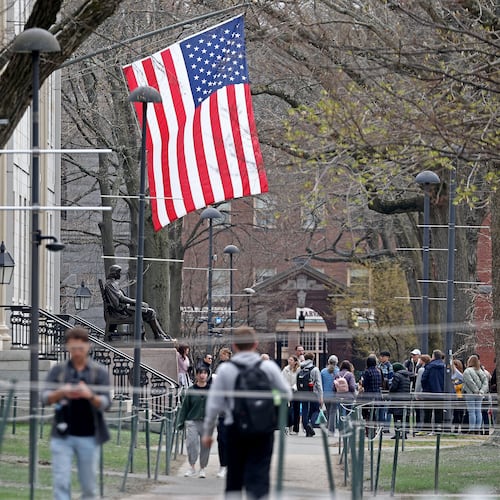America’s housing crisis is a tale of two neighborhoods. In Maddox Park, which is predominantly black, the average life expectancy is less than 64 years. Five miles away in Buckhead, which is predominately white, life expectancy is 84. Their residents live in different worlds, and their housing options mirror the gap in health outcomes. This pattern repeats itself across the country – people secure in their homes a stone’s throw from their neighbors who struggle with housing — the result of policies that for generations were designed to promote and maintain segregation by race and class.
In the presidential campaign and in policymaking circles at the state and local level, the issue of housing is too often addressed in isolation. If we are to address this inequity that has created such vast disparities of health and well-being, we must consider housing and health together. America’s housing crisis is a public health crisis, and those seeking higher office in 2020 — whether in city halls, state houses, or in our nation’s capital — should reframe the conversation and embrace holistic solutions.
Housing is strangling urban and rural communities in every state. As many as 38 million U.S. households are “cost-burdened”— meaning they spend more than 30 percent of their income on housing. That leaves precious little to pay for groceries, clothes and electricity, not to mention medication, visits to the doctor, or savings. The U.S. needs an additional 7.2 million rental homes for low-income families, a shortage that will take years to overcome.
A home is a family’s launching pad. Some of us live in neighborhoods with stores that offer fresh, healthy food; some of us make do with the limits of a virtual food desert. A home dictates whether our children attend a quality school or an underfunded one, whether the streets are safe and the air clean. A home near public transportation can open the door to better employment opportunities. Homes with rising rents force many families to endure the turnstile of evictions, which can disrupt a child’s education and prospects. A good deal of healthy living has to do with healthy choices, but the choices people make depend on the choices they have and the neighborhoods they call home. Too many families face impossible choices.
The ability to afford a home can impact one’s economic future, too, and inform whether a family can create wealth that flows, and builds, from one generation to the next. Only 41 percent of African American residents own their homes, compared with 74 percent of white residents, according to the 2019 County Health Rankings. Owning a home is one of the primary ways we pass wealth to our children, which helps contextualize the nation’s much-discussed wealth gap: the median African American family today has just $3,600 in wealth compared with $147,000 for white families, according to the Institute for Policy Studies.
Those disparities make sense viewed through the lens of history. For generations, almost every policy related to housing — from zoning codes that determine what gets built where, to lending rules that dictate who is worthy of a mortgage and where people can buy houses — was established to promote and maintain segregation. The result is people in certain neighborhoods enjoying opportunities while people in other neighborhoods face barriers and burdens that have held them back regardless of how hard they’ve worked or how much drive to succeed they’ve shown.
There is no single solution, but there are examples of progress and hope. Consider East Lake, which in the early 1990s struggled with violence, under-resourced schools, and public housing in disrepair. Through a coalition involving private philanthropy, government, and community-based organizations, East Lake created a new future through what is now known as the Purpose Built Communities model, which helps transform communities with a three-pronged approach: housing, education and wellness.
Housing challenges are straining communities across Atlanta and the U.S. Decades of unjust and short-sighted policies will not be undone in an election cycle, but if we can agree on the challenge, we’ll be able to creatively and systematically forge a path to a healthier tomorrow. We must make investments and enact policies at the local, state and national level that give everyone a fair and just opportunity to prosper.
This is not a political issue, but a fundamentally American one. The family living in a shelter understands this. The parent struggling to pay rent understands this. Now it’s time for those wielding the levers of power to understand this — and to act on it.
Dr. Richard E. Besser, a physician, is president and CEO of the Robert Wood Johnson Foundation, the nation’s largest philanthropy dedicated solely to health, in Princeton, N.J. Follow him on Twitter: @DrRichBesser. Shirley Franklin, a former mayor of Atlanta, is executive board chair of Purpose Built Communities., an organization dedicated to helping communities fight poverty through holistic revitalization efforts. Follow her on Twitter: @ATLShirley
About the Author
Keep Reading
The Latest
Featured



